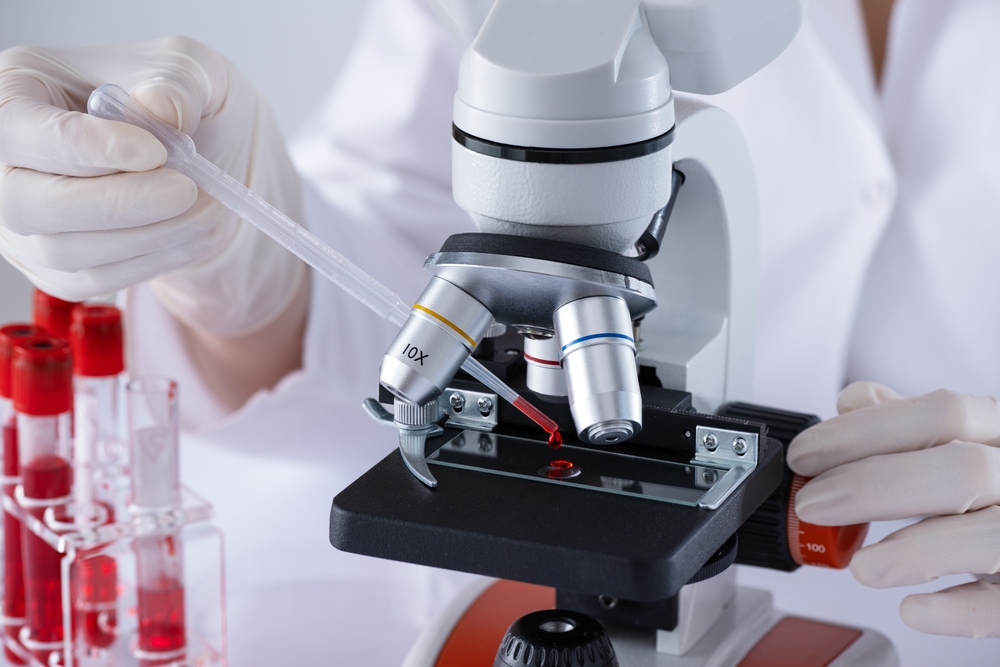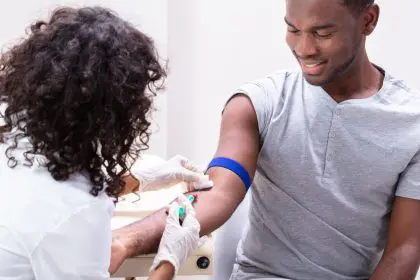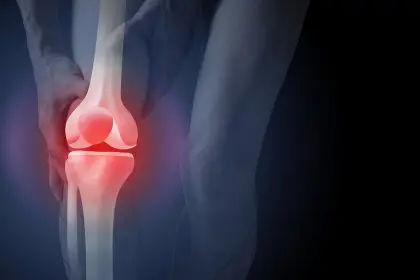While blood clots serve an essential purpose in healing injuries, they can transform into life-threatening conditions when they form inappropriately. Medical experts emphasize that recognizing early warning signs makes the critical difference in preventing severe complications. Understanding these signals helps people take swift action when minutes matter most.
Understanding clot formation
Blood clots develop when platelets and proteins in blood create blockages within blood vessels. While this process normally helps prevent excessive bleeding from injuries, problematic clots can form without warning in deep veins or arteries. Medical experts explain that these abnormal clots pose serious risks when they block blood flow or break free and travel through the bloodstream.
Critical warning signs
The first major warning sign often appears in the legs, where unexplained swelling doesn’t improve with elevation or rest. Medical professionals emphasize that this swelling typically affects one leg and may feel warm to the touch, indicating potential deep vein thrombosis (DVT).
Distinctive pain patterns create the second crucial indicator, producing sensations different from typical muscle soreness. Vascular specialists describe this pain as cramping or throbbing that intensifies over time, particularly during movement. Unlike exercise-related discomfort, clot-related pain typically doesn’t improve with rest or common pain relievers.
The third vital sign appears through visual changes in skin appearance, often indicating underlying clot formation. Medical experts note that affected areas may display redness, bluish tints, or purple discoloration. These color changes, especially when accompanied by warmth or tenderness, warrant immediate medical evaluation.
When clots travel to the lungs, creating a pulmonary embolism, the fourth major sign emerges through dramatic breathing pattern changes. Emergency medicine specialists emphasize that sudden shortness of breath, particularly when accompanied by chest pain or rapid heartbeat, requires immediate emergency care. These symptoms can develop rapidly and may indicate a life-threatening situation.
The fifth critical warning sign affects the brain, creating distinct symptoms that require urgent attention. Neurologists explain that sudden, severe headaches, unexpected vision changes, or episodes of dizziness might indicate clot formation in cerebral blood vessels. These symptoms, particularly when they appear suddenly, could signal an impending stroke.
Understanding risk factors
Various circumstances increase blood clot risk, from genetic predisposition to lifestyle choices. Medical research shows that extended periods of inactivity, recent surgeries or injuries, and certain medications, particularly hormonal treatments, all contribute to increased risk. Pregnancy and postpartum periods create additional risk factors, along with obesity and smoking. Family history of clotting disorders also plays a significant role in determining individual risk levels.
The silent threat in your body
While blood clots serve an essential purpose in healing injuries, they can transform into life-threatening conditions when they form inappropriately. Medical experts emphasize that recognizing early warning signs makes the critical difference in preventing severe complications. Understanding these signals helps people take swift action when minutes matter most.
Understanding clot formation
Blood clots develop when platelets and proteins in blood create blockages within blood vessels. While this process normally helps prevent excessive bleeding from injuries, problematic clots can form without warning in deep veins or arteries. Medical experts explain that these abnormal clots pose serious risks when they block blood flow or break free and travel through the bloodstream.
Critical warning signs
The first major warning sign often appears in the legs, where unexplained swelling doesn’t improve with elevation or rest. Medical professionals emphasize that this swelling typically affects one leg and may feel warm to the touch, indicating potential deep vein thrombosis (DVT).
Distinctive pain patterns create the second crucial indicator, producing sensations different from typical muscle soreness. Vascular specialists describe this pain as cramping or throbbing that intensifies over time, particularly during movement. Unlike exercise-related discomfort, clot-related pain typically doesn’t improve with rest or common pain relievers.
The third vital sign appears through visual changes in skin appearance, often indicating underlying clot formation. Medical experts note that affected areas may display redness, bluish tints, or purple discoloration. These color changes, especially when accompanied by warmth or tenderness, warrant immediate medical evaluation.
When clots travel to the lungs, creating a pulmonary embolism, the fourth major sign emerges through dramatic breathing pattern changes. Emergency medicine specialists emphasize that sudden shortness of breath, particularly when accompanied by chest pain or rapid heartbeat, requires immediate emergency care. These symptoms can develop rapidly and may indicate a life-threatening situation.
The fifth critical warning sign affects the brain, creating distinct symptoms that require urgent attention. Neurologists explain that sudden, severe headaches, unexpected vision changes, or episodes of dizziness might indicate clot formation in cerebral blood vessels. These symptoms, particularly when they appear suddenly, could signal an impending stroke.
Understanding risk factors
Various circumstances increase blood clot risk, from genetic predisposition to lifestyle choices. Medical research shows that extended periods of inactivity, recent surgeries or injuries, and certain medications, particularly hormonal treatments, all contribute to increased risk. Pregnancy and postpartum periods create additional risk factors, along with obesity and smoking. Family history of clotting disorders also plays a significant role in determining individual risk levels.
The pregnancy connection
Pregnancy creates unique blood clot risks that require special attention throughout the entire gestational period. Obstetric specialists explain that hormonal changes and increased pressure on blood vessels during pregnancy elevate clotting risks significantly. These risks often extend well into the postpartum period, making awareness particularly important for new mothers. Regular movement, proper hydration, and close monitoring become essential components of prenatal and postpartum care to prevent clot formation.
Travel considerations
Long-distance travel, particularly air travel, increases blood clot risk through extended periods of immobility. Travel medicine specialists recommend maintaining movement during long flights through simple seated exercises and regular walks when possible. Proper hydration throughout travel proves essential, while compression socks can provide additional protection during extended journeys. Medical experts advise taking brief walking breaks every few hours during long car trips to maintain healthy circulation.
Surgical awareness
Surgical procedures significantly increase blood clot risk, particularly during recovery periods. Medical professionals emphasize the importance of following post-operative movement recommendations precisely. Early mobilization, when approved by healthcare providers, plays a crucial role in preventing post-surgical clots. Understanding specific warning signs during recovery helps patients identify potential problems early, when intervention proves most effective.
Cancer implications
Cancer patients face elevated blood clot risks due to both the disease itself and its treatments. Oncologists explain that certain cancers and chemotherapy medications can increase clotting tendency significantly. Regular monitoring becomes essential throughout cancer treatment, with medical teams often implementing specific preventive measures. Understanding these increased risks helps patients and caregivers remain vigilant for early warning signs.
Prevention approaches
Medical experts emphasize the importance of regular physical activity in maintaining healthy circulation and preventing blood clots. Proper hydration throughout the day supports healthy blood flow, while weight management through healthy eating patterns reduces overall risk. Smoking cessation dramatically improves vascular health, reducing clot formation risk significantly. Creating regular movement patterns during necessary periods of inactivity helps maintain proper circulation.
Movement benefits
Physical activity plays a crucial role in preventing blood clots through multiple body systems. Exercise improves overall circulation while strengthening vascular health throughout the body. Regular movement helps maintain healthy body weight, reducing pressure on blood vessels. Activity patterns that incorporate both cardiovascular exercise and strength training provide optimal protection against clot formation.
Dietary influence
Nutrition choices significantly impact blood clot risk through various physiological mechanisms. Proper hydration stands as the foundation of healthy blood flow, while balanced eating patterns support overall vascular health. Foods rich in natural compounds that support healthy blood flow can complement medical treatments when appropriate. Working with healthcare providers to develop appropriate eating patterns helps optimize protection against clot formation.
Treatment options
When blood clots develop, medical professionals employ various treatment approaches based on individual circumstances. Anticoagulant medications often form the foundation of treatment, carefully monitored to maintain appropriate levels. Specialized procedures may become necessary in certain cases, while preventive treatments help high-risk patients avoid future complications. Regular monitoring ensures treatment effectiveness while minimizing potential side effects.
Diagnosis methods
Healthcare providers use comprehensive approaches to identify blood clots accurately. Advanced imaging techniques provide detailed views of blood flow patterns and potential blockages. Laboratory testing helps identify underlying factors contributing to clot formation. Physical examinations combined with detailed patient histories help medical teams develop appropriate treatment plans. Regular monitoring ensures early detection of potential complications.
Ongoing management
Individuals with recurring clots or high risk factors require careful long-term management strategies. Regular medical monitoring helps prevent future complications while ensuring treatment effectiveness. Healthcare providers adjust medication protocols as needed based on patient response and changing circumstances. Lifestyle modifications support medical treatments while improving overall health outcomes.
Research advances
Medical science continues advancing understanding of blood clot prevention and treatment. New therapeutic approaches emerge through ongoing research, while diagnostic capabilities continue improving. Enhanced understanding of risk factors helps medical teams implement more effective preventive strategies. These advances provide hope for improved outcomes in blood clot treatment and prevention.
Emotional impact
Managing blood clot risk often creates significant psychological effects requiring attention and support. Many patients experience anxiety about potential recurrence, while others face depression during recovery periods. Fear of physical activity may require professional guidance to overcome safely. Building strong support networks helps patients navigate both physical and emotional challenges effectively.
Understanding blood clots’ warning signs and risk factors empowers individuals to take appropriate action when needed. While these conditions can create serious health risks, awareness and prompt response significantly improve outcomes. Medical experts emphasize that combining knowledge with active prevention measures offers the best protection against blood clot complications. Regular communication with healthcare providers ensures appropriate monitoring and timely intervention when necessary.
















